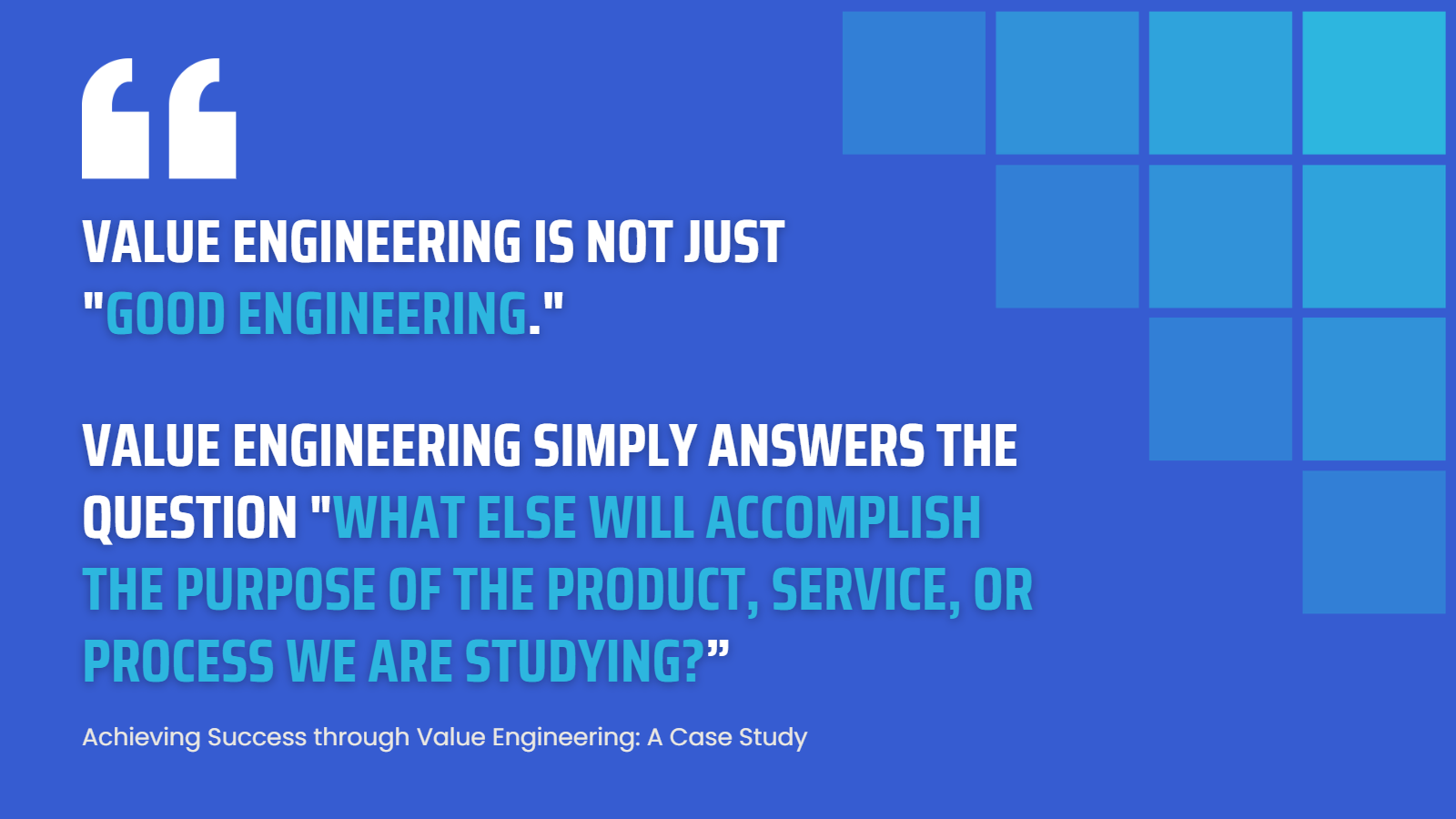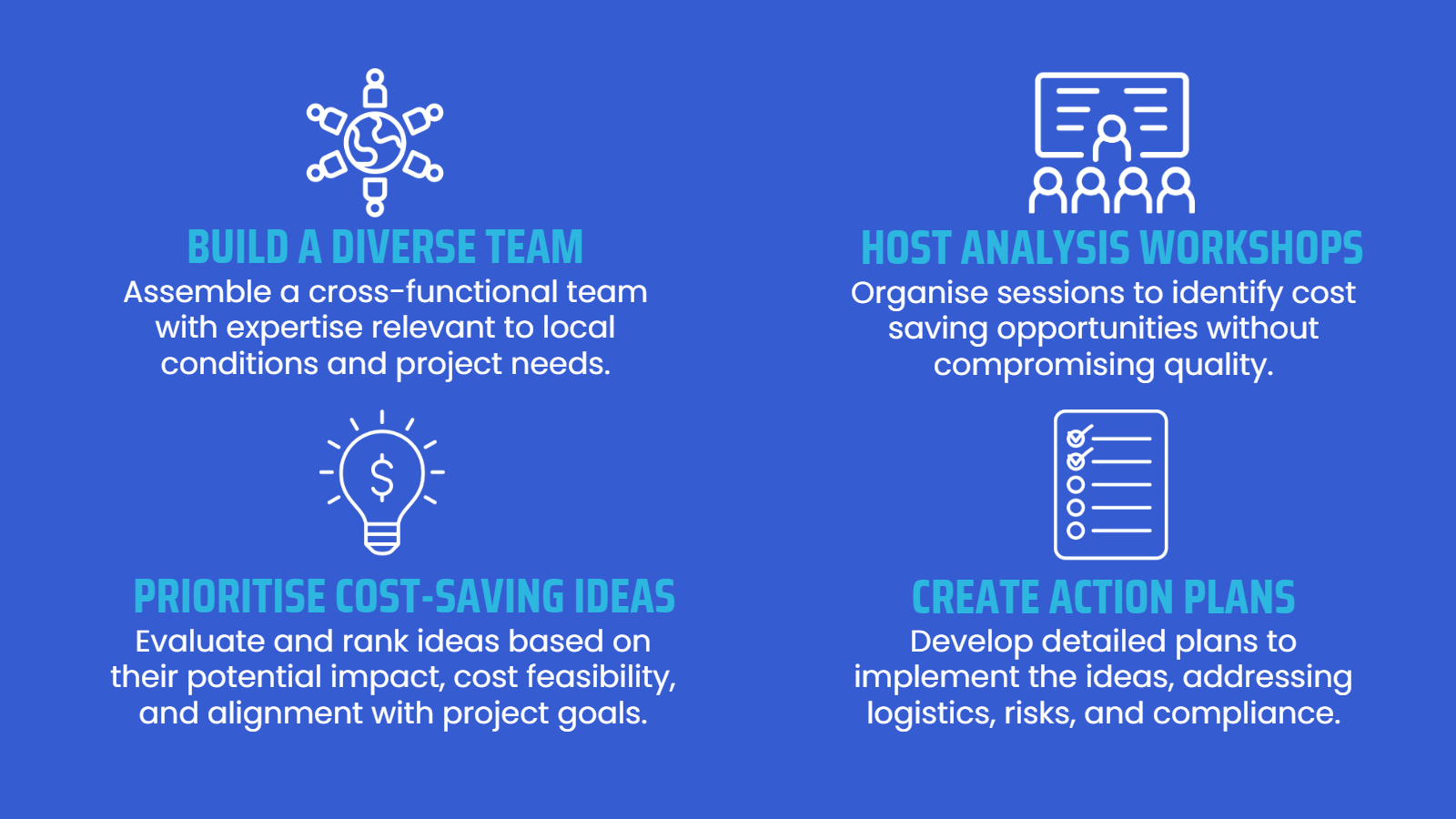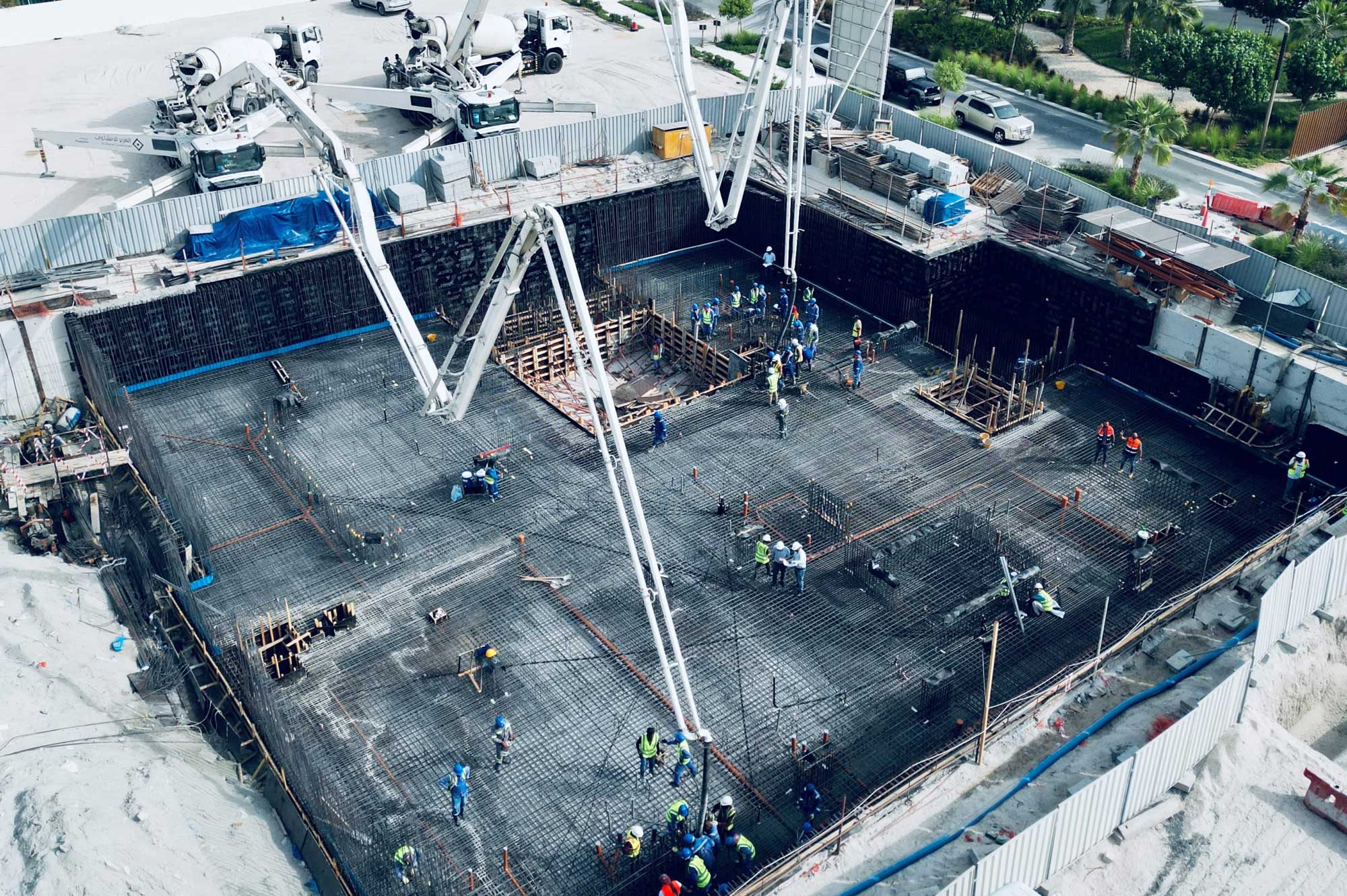In the dynamic landscape of construction, delivering projects within budget without compromising quality is a paramount challenge. This is where the concept of value engineering (VE) emerges as a powerful tool. By systematically analysing project components and processes, VE can aim to optimise value by eliminating unnecessary costs for the construction project.
This blog delves into the intricacies of value engineering in construction, its role in enhancing efficiency, key techniques, and implementation strategies for project managers.
Understanding Value Engineering in Construction
What is Value Engineering?
Value engineering is a collaborative approach that focuses on achieving the required function of a project at the lowest total cost over the project’s lifecycle. It involves a rigorous analysis of all project elements to identify potential cost reductions without compromising performance or quality.
What is the Role of Value Engineering in Construction Projects?
A case study stated that value engineering is not just "good engineering." It is not typical cost reduction in the sense that it doesn't "cheapen" the product or service, nor does it "cut corners". Value engineering simply answers the question "what else will accomplish the purpose of the product, service, or process we are studying?”.
In the construction industry, value engineering plays a pivotal role in balancing cost, performance, and quality. By engaging in a comprehensive review of project plans and specifications, construction managers can uncover opportunities to reduce expenses while maintaining or even enhancing the project’s overall value. This collaborative process involves architects, engineers, contractors, and other stakeholders to maximise cost savings of the project.

What are the Key Value Engineering Techniques in Construction?
Material Substitution
This involves exploring alternative materials that offer comparable or superior performance at a lower cost. For instance, in the UAE's arid climate, using locally sourced materials like gypsum board instead of traditional plaster can reduce costs and environmental impact. Additionally, substituting certain types of concrete with high-performance concrete can enhance durability and reduce long-term maintenance expenses.
Process Optimisation
Shift focus on streamlining construction processes to improve efficiency and reduce costs. Prefabrication, a common practice in the UAE, involves manufacturing building components off-site, accelerating construction timelines, and minimising on-site labour. Lean construction principles, emphasising waste reduction and value creation, have also been adopted to enhance project delivery.
Design Simplification
This involves eliminating unnecessary complexities in building designs. By adopting standardised components and modular design approaches, construction projects can be expedited, and material waste reduced. For example, utilising pre-engineered steel structures can streamline the construction process and lower costs compared to traditional reinforced concrete.

How Do You Implement Value Engineering in Project Management?
Step 1: Establish a Value Engineering Team
The foundation of successful value engineering lies in assembling a capable and diverse team. This team should be cross-functional, bringing together representatives from various disciplines such as architecture, engineering, construction, and procurement.
In the GCC region, for example, it’s essential to include experts familiar with local building regulations, climate conditions, and available materials. A project in the UAE might benefit from having a sustainability expert on the team to address the region’s environmental goals. With the inclusion of a diverse set of professionals, you ensure that all angles are considered, leading to innovative and practical cost-saving ideas.
Step 2: Conduct Value Analysis Workshops
Once the team is in place, the next step is to organise value analysis workshops. These workshops are structured brainstorming sessions where the team can explore every component of the project to identify potential cost-saving opportunities. For instance, in a construction project in Saudi Arabia, the team might consider using locally sourced limestone as a building material instead of imported alternatives, reducing both cost and carbon footprint.
Another example could involve re-evaluating the design of HVAC systems to optimise energy efficiency in the extreme climate conditions of the GCC, where cooling systems are a significant cost driver. The workshops should focus on questioning the necessity of each element in the project, considering alternative approaches, and identifying opportunities to reduce costs without compromising on quality or functionality.
Step 3: Prioritise Cost-Saving Ideas
After generating a range of potential ideas, the next step is to prioritise them based on their impact and feasibility. For example, in a high-rise development in Qatar, the team might identify the use of precast concrete elements as a top priority due to the significant savings in both time and labour costs.
Alternatively, in a large-scale infrastructure project in Oman, the prioritisation might focus on the use of modular construction techniques, which can be rapidly deployed and reduce on-site labour requirements. The team should evaluate each idea’s potential to reduce costs, improve efficiency, or enhance quality.
Step 4: Develop Implementation Plans
With the top cost-saving ideas prioritised, the next step is to develop detailed implementation plans. These plans should outline the steps required to integrate the selected value engineering solutions into the project. For instance, if the decision is made to use prefabricated units in a residential project in Dubai, the implementation plan would detail the logistics of transporting these units to the site, the schedule for their installation, and the coordination required with the local contractors.
In another example, if the project involves substituting traditional cladding materials with more cost-effective and weather-resistant alternatives, the plan will include sourcing strategies, installation procedures, and compliance with local building codes. The implementation plans should also address potential challenges, such as supply chain disruptions, and include contingency plans to manage risks.

The final step is to continuously monitor and evaluate the results of the value engineering initiatives. This might involve tracking the performance of energy-efficient building systems in a new commercial development comparing actual energy consumption against projected savings. Another example could be monitoring the durability of alternative construction materials used in a project in Riyadh, ensuring that the long-term maintenance costs are in line with expectations.
Regular reviews are essential to be conducted to ensure that the value engineering measures are delivering the expected benefits, and adjustments should be made as necessary. By maintaining a focus on continuous improvement, the project team can ensure that value engineering contributes to the long-term success of the project, particularly in the demanding and rapidly evolving construction landscape.
Conclusion
Value engineering is a strategic approach that empowers construction professionals to optimise project value while maintaining quality standards. By implementing the techniques and strategies outlined in this article, project managers can achieve significant cost savings, improve project efficiency, and enhance overall project success.
About Us
At Stonehaven, we specialise in implementing value engineering techniques in construction to maximise project efficiency and cost-effectiveness among many more of our comprehensive services that help our clients achieve exceptional results.
Our team of experts is dedicated to helping you achieve your project goals while staying within budget. Contact us today to learn how we can support your construction projects with our industry-leading value engineering solutions.








